Battle for Zendikar
is out, and it’s a fascinating set. I thoroughly approve of the decision to drop annihilator from the Eldrazi (which I always want to pluralize into
Eldrazim, for some reason), as I think that these Eldrazi are less irritating to see beating down on you. The problem I had with old Ulamog, the Infinite
Gyre decks is that colorless decks trying to cast an eleven-drop commander tend to lean into the ramp, and as a result, there would occasionally be games
where you could drop a turn 3 or turn 4 Ulamog, and people just couldn’t handle it as you wiped clean all the board presence they had managed to accrue.
And the worst part, by far, is that a 10/10 can’t even Commander damage you to death in two hits, no matter how far behind you were at that point. It was
an unpleasant way to win a game, and I backburnered my Ulamog deck until Nulamog was spoiled.
Nulamog, i.e. Ulamog, the Ceaseless Hunger, solves a lot of these problems. By exiling a person’s library, and not their boardstate, it’s still possible to
slam it down relatively early without totally ruining someone’s day. You still have a solid chance of killing them quickly, since you’re milling out huge
chunks of a player’s library with each attack, whether or not your opponent chumps, but you’re still letting other players play the game.
Relatedly, I’m of the opinion that the new Eldrazi also make a really interesting use of the exile zone. I’m not necessarily to the point where I could
support running Rest in Peace as a vaguely defensive measure against a Processor Assault, but I am a fan of the way that the Processors and cards like
Oblivion Sower make use of the exile zone. It’s not the first time this game zone has been highlighted, since Time Spiral block played around with
taking things out of the exile zone as part of the whole suspend keyword, but this still manages to feel new and interesting in a way that matches the
flavor of these eldritch horrors.
When I saw this week’s submission, I wasn’t sure if I was a good fit for the submission. It’s a Brago, King Eternal deck, and I’ve heard those have a
reputation for being somewhat vicious. Not only that, but the submitter was asking me to make it more competitive, whereas I often find myself
intentionally holding back from some of the more vicious things you can do in a format that can occasionally feel like grindier version of Legacy. But
Brago’s list contained an Oblivion Ring, which seems only moderately good with Brago, since normally they get their creature back.
But what if they didn’t? What if Oblivion Ring had its victim snatched from the aether to the grave? Resetting that Oblivion Ring would be added value.
Permanents with temporary exile conditions will provide the Processors with fuel, and by processing those exiled cards, you’d have free reign to flicker
the exiler without any loss. Sure, Brago isn’t the perfect commander for this interaction, given the dearth of white Eldrazi (something that irks me as a
fan of Elesh Norn, Grand Cenobite), but it would be a neat way to use this commander, and that’s what I tend to look for when I’m trying to select a deck
for the column.
Anyway, enough with my preamble. Here’s Greg’s letter:
Dear Azami,
I have been wanting to submit a decklist for a while now and I finally have one I feel is worthy. I have recently moved, and the area I am in now has a
much more competitive play group from my previous casual group. Most of my decks were looking to do fun things and so I attempted to build and bring to the
table a powerful deck, only to be crushed… I have tried updating my list several times but I always seem to be the weakest deck at the table (maybe my
synergy is off?). I am not interested in completely spiking out the deck, but I would like for the deck to hold its own at a competitive table. The biggest
rules in my new area are: no infinite combos, no lock down strategies (ie land locks via Winter Orb and friends, spell locks via Decree of Silence +
resets, Deadeye Navigator plus Venser, Shaper Savant etc.) and no complaining! I would just find a toned down group but this is basically the only
playgroup I have found so far (not a lot of magic in the area) and I would like to be able to stay in it (Magic is life!!!)! My budget isn’t super high
probably no more than $50 not including the store credit, most of my cards are from playing for a long time/trading. Even if I don’t get the feature could
I get some suggestions? Please help!!
Commander:
Creatures: 17
Planeswalkers: 10
Jace, The Living Guildpact
Lands: 40
Island x 7
Plains x 6
Minamo, School at Water’s Edge
Spells: 32
Another note about the deck. I tried to build the deck around the commander without actually relying on him very much. Mainly this is due to him (almost)
never living/connecting. As a result I prefer if the cards do great things without him, amazing things with him. I am very willing to take some expensive
card choices on the side as it would give me something to work/trade towards.
Thanks for the consideration!
– Greg
I’m not a huge fan of “no complaining” rules around the Magic table, since one person’s feedback is another’s complaint. Personally, I think we could all
grow a lot as individuals if we process our emotional responses as they’re happening, as opposed to
stuffing them deep down inside and keeping an eye on them
, but I can certainly get behind the promotion of positive attitudes in a playgroup. I tend to come at it from the deckbuilding side, but given that I am the second best writer currently contributing to this column,
that’s to be expected.
Anyway! This list is an interesting one. It’s built more like a control deck, likely due to the desire to be less reliant on Brago hitting another player
(a reasonable decision, as combat damage triggers can be unreliable against any defensive deck). What interaction there is for Brago to work with primarily
involves strong cards that see play in more competitive formats. Flickering Stoneforge Mystic must feel incredibly powerful, and True-Name Nemesis is
certainly better in multiplayer if you can reset it as needed.
That’s nothing compared to resetting planeswalkers, though. While I have not personally played Jace, the Mind Sculptor in Commander, that’s more because
I’ve had the experience of playing him in both Standard and Legacy, and I’m a little Mind Sculpted out. Plus, I’ve been trying to cut back on cards in my
Commander decks that are individually worth more than I could bear to lose; my decks have multiplied like bunnies, and keeping track of value in them is a
pain in the tuchus.
If someone could come up with a way to easily scan and catalog sleeved cards, I imagine they would sell a lot of product. I’d certainly get in line for
something like that. Organizing cards can be a nightmare.
Anyway, double-dipping on Jace activations seemed like a lot of fun, and it lead me to another idea… but that can wait for its section. It’s time to begin
the breakdown!
Lands
Out
(4):
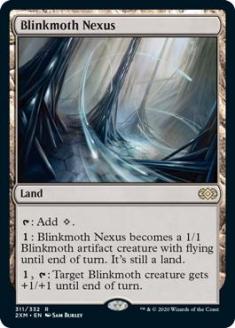
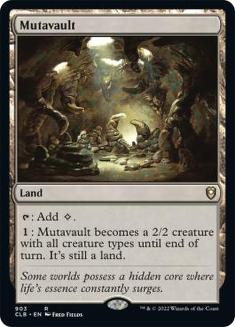
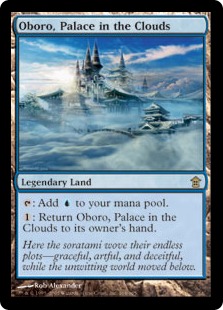
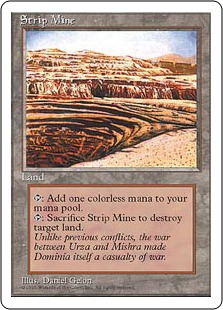

In
(2):
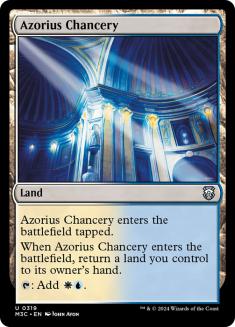
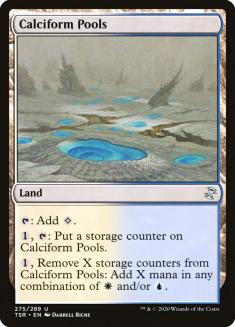

For starters, I did not feel this deck needed to be running 40 lands. While I do have some 40-land decks, in general I think the sweet spot falls somewhere
around 37.75 lands. This deck had some serious artifact ramp options, and a relatively low curve, so it seemed like two of those slots could be put to
better use elsewhere.
I did generally like the manabase, though. I suspect the Battle Lands will lead to a proliferation of fetchlands in Commander, now that two cycles of typed
dual lands have been printed within the past few years, plus the reprint of the Onslaught fetches. Fetch is happening, and we have to come to
terms with that. These duals improve cards like Flagstones of Trokair and Nimbus Maze as well. The creature-lands, though, seemed to not synergize
particularly well with the rest of the deck. If it were a tribal deck, I could see including Mutavault; if it were a Bident of Thassa deck, I could see
including Blinkmoth Nexus. The deck is neither of those things, though, so they were the first two cuts. Their bodies were unnecessary, and the colorless
was a drawback.
I also cut Strip Mine for a similar reason. Greg already had Wasteland, Ghost Quarter, and Tectonic Edge for redundancy, and the only reason to run Strip
Mine alongside those other options is for bombing out an opponent’s basics to keep them off a color or to keep them from accumulating a critical mass of
lands. That seemed a bit out of line with the anti-lock ethos expressed above, so this was another card to cut. Finally, I needed to make one more cut, so
I took out Oboro, Palace in the Clouds. It’s primarily useful against Armageddon effects and to trigger landfall, and these did not seem broadly
synergistic with the goals of your deck.
Instead, I brought in Azorius Chancery and Calciform Pools. It’s possible their exclusion was intentional; some people are not a huge fan of the Ravnica Karoo cycle or the second coming of the storage lands. Personally, though, I think they make for a solid addition to a two color manabase,
so I slotted them in.
Side note: There are no enemy-colored storage lands, and a set of enemy colored Commander precons are being released in less than a month. Perhaps
we’ll see the cycle completed?
Ramp
Out
(2):
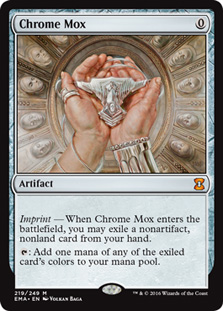
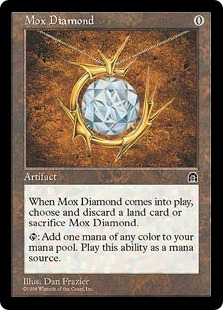

If I was cutting down on lands, I wanted to cut down on these as well. First off, I think Chrome Mox, and in fact all the imprint cards that require
something to be imprinted upon them for their powers to work, are about to get a lot less powerful. Processors are a thing now, and if you process an
imprint off a Chrome Mox, you turn it off. Sure, this deck can reset it with Brago, but that’s going to require an extra card, and what’s to say they don’t
just process the imprint again? Cards with abilities linked to the exile zone are going to be a lot more variable in their strength going forward, and
that’s a consideration for building.
Mox Diamond was cut for similar issues of negative card advantage. Mox Diamond is a strong card, I’ve played it in Abzan back when Deathrite Shaman was
new, and it was a great enabler in that context. But Commander doesn’t need those explosive starts, and it’s a format where card advantage is key. Maybe it
would be a better addition if it cost less to flicker it with Brago, but a card (and a specific type of card at that) is generally not worth cashing out
for a single mana. Something like Mox Diamond, which is usually a worse top-deck than a land in the mid-to-late game, isn’t really necessary to keep the
gears turning.
Smoothing
In
(4):
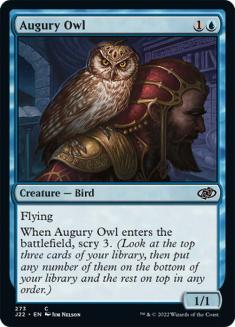
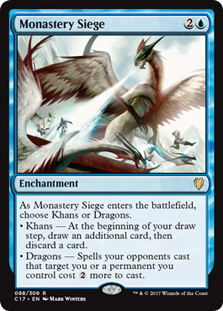
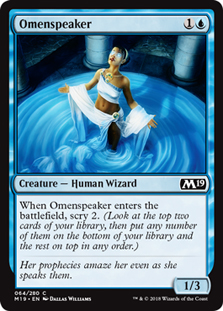
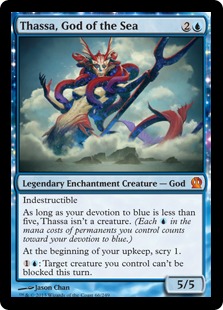

Speaking of lubricants, in a deck like this I often find it useful to be able to have some control over what you’re going to draw. Scry is an underrated
ability in Commander, and in many ways it’s more useful than the on-command effect offered by Sensei’s Diving Top. I mean, sure, the Top is more repeatable
without assistance, but it doesn’t get cards off the top of your deck in the absence of a fetchland, and it doesn’t play particularly well with Brago.
These cards, on the other hand, are better than they look. Augury Owl and Omenspeaker are the type of early plays that a control deck wants to be doing.
They keep you from being shields down, they smooth out your draws, and they’re even better when you can flicker them with Brago. They’re unassuming little
commons, but they can do a fair bit of work.
Monastery Siege similarly provides you with some control over your draws. What I like about this one, though, is that while flickering it with Brago
doesn’t provide any immediate advantage, it allows you to reset its mode. So, in the early stages of the game, you can loot every turn, not providing you
with card advantage per se, but ensuring your draws are much more live than they otherwise might be. Later, though, that ability declines in its
usefulness; that’s when you can flicker it and get a defensive enchantment, providing your whole team with frost armor. That’s an interesting use of Brago,
and it’s strong on its own. As requested.
Finally, there’s Thassa, God of the Sea. Thassa is kinda amazing, in that it’s hard enough to remove that people will leave it on the table far past the
point they should, and it will provide you with selection every turn it lives. In a Brago deck, though, it’s her activated ability that proves her true
worth. Thassa’s ability to make things unblockable is solid when you’re only using it to push beef past opposing defenses, and it’s crazy good when your
commander needs to hit to get its effect. Plus, sometimes it wakes up, and then you have a stone wall that can hold the ground against all but the biggest
tramplers.
Draw
Out
(6):
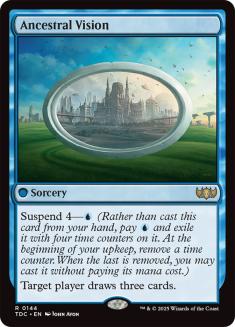
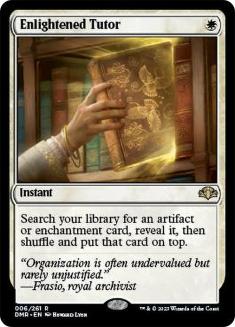
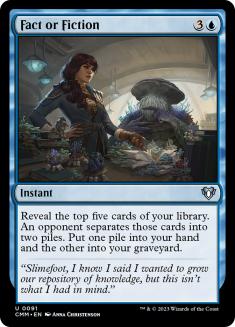
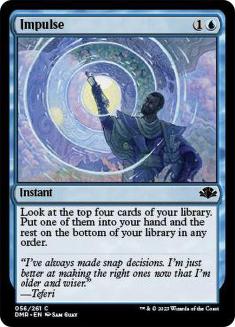
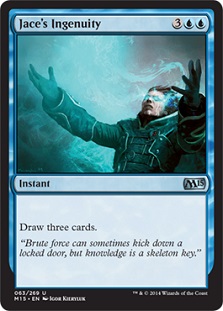
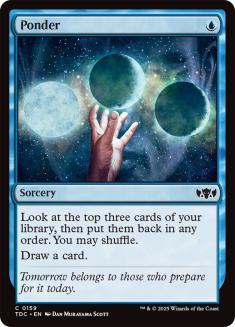

In
(2):
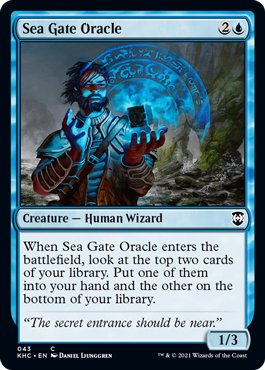
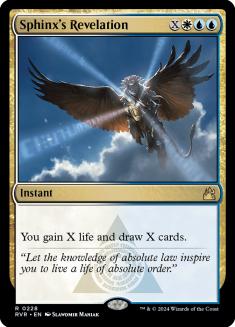

Everything I said about Chrome Mox vis a vis the Processors holds double for Ancestral Vision. While you can reset the Chrome Mox, if they process your
Ancestral Vision, you’re pretty hosed. Even Snapcaster Mage can’t bring it back. It’s great in Legacy, and I wish it were legal in Modern (especially now),
but Commander is the format you’re most likely to run into Processors, at least while people are still figuring them out. They just cut the strings of so
many different cards!
I have a bias against tutors, and tend to prefer the ones that actually replace themselves and don’t leave you down a card. I think Enlightened Tutor is a
reasonable card to play in dedicated artifact or enchantment decks, those caveats aside, but I don’t think it’s good enough outside of that context. There
are better ways to get equipment, and given the high threat profile that your Swords of X and Y, Umezewa’s Jitte, and Batterskull will draw, you might not
want to have access to them at all moments. Sure, it grabs O-Ring, but in that case why not just run more O-Ring effects? That’s my preference.
The four remaining draw spells all have their weaknesses in a Brago deck. First, they’re not permanents. Even being able to flicker Snapcaster Mage doesn’t
make these cards totally worth their slots. Impulse and Ponder are one-for-ones; good ones, mind you, but they’re not advancing your gameplan. Jace’s
Ingenuity and Fact or Fiction are both instant-speed card draw that will usually net you one or two cards, but Brago is a permanent-based commander, and
these aren’t strong enough without the advantage of a broader synergy. Fact or Fiction, in particular, is strongest in graveyard themes, and this deck
doesn’t have a ton of those.
Sea Gate Oracle, on the other hand, plays a role quite similar to the Omenspeaker and Augury Owl mentioned above. It comes down, helps smooth out your
draws, keeps you from being shields down, and then can be flickered with Brago for repeatable advantage. You definitely want ways to turn the Brago
triggers into cards, to maximize the few times he’ll make contact, and this card does a good job of that.
Sometimes, though, you need some power. Yes, Sphinx’s Revelation offers a worse rate of return than Jace’s Ingenuity, but its ability to scale as the game
goes on makes it a far stronger card, and the lifegain is often quite relevant. In addition, with your mana rocks, you can do a neat thing where you stack
the Brago trigger, tap them out, let them flicker back into play untapped, and tap them again. There are only a couple of things that mana bonus will be
useful for, and Sphinx’s Revelation is one of them.
Dig Through Time is another, for what it’s worth.
Copy Versus Steal
Out
(2):
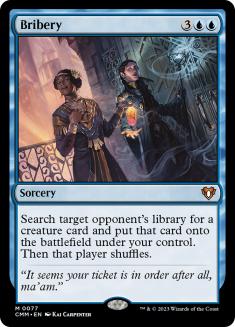
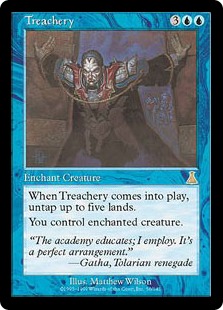

In
(2):
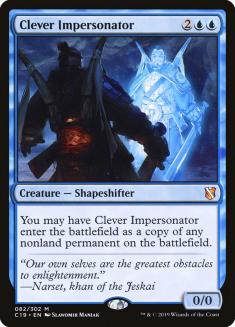
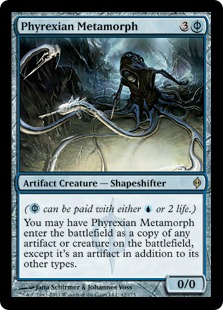

Brago’s whole deal is that he resets Mulldrifters. Most of the time, that just means he gets another trigger. When you add in some omni-clones, though, you
start to be able to abuse that. If the best creature on the board, which you’ve copied, gets outclassed, you can copy it again. If you are copying an
artifact, and you need a creature, Brago has you covered. These cards are effective at jujitsu when they only come into play one time; imagine being able
to have them come back into play whenever you so desire.
Incidentally, if you find yourself taking to this subtheme, I’d suggest checking out Sakashima the Impostor. It was a bit pricey for the budget here, and I
tried to focus on Clones that could also copy noncreature permanents, but Sakashima is a blast.
Bribery, on the other hand, has no synergies with flickering. Sure, it’s a very powerful card, agreed. Being able to ransack your opponent’s library to
snag their Eldrazi, all without having to pay its mana cost, is definitely a card that is strong where it fits. But it doesn’t fit here. Brago will send
the stolen goods back to its owner, and Homeward Path, a strong defensive card in a deck like this, gets neutered if using it means giving back the
scariest card in someone’s deck. It would fit well in a Jace, Vryn’s Prodigy deck, but it’s a little off-model for this one.
Treachery is cute, though. I like how flickering it lets you untap some lands, and in a deck with mana multipliers that could lead to some serious power
plays. I just don’t know if that’s good enough here. Unless you’re netting mana with or without Brago, Treachery is just a free Mind Control. That’s
strong, but it’s also vulnerable to instant-speed enchantment removal. Now that Scour from Existence is a card, any deck with a bunch of mana up, including
a mono-black one, is threatening to chop your legs out from under you when you rely on this type of effect.
Removal
Out
(3):
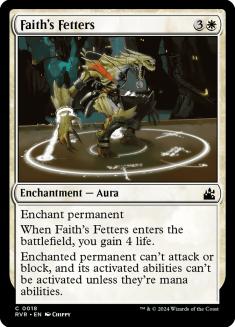
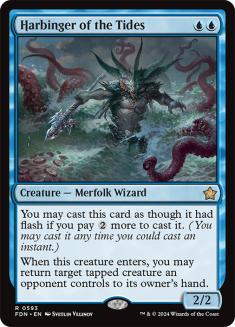
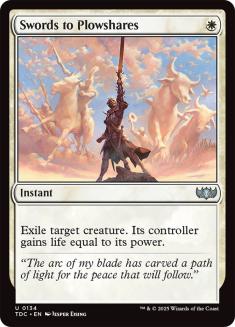

In
(3):
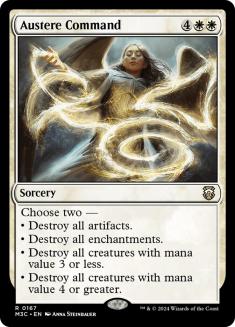
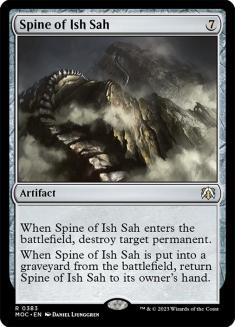
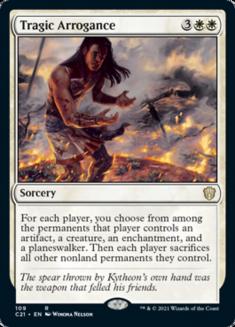

A caveat: this is not all the removal I’ve added to this build. I’m going to talk about the exiling effects below, and several of them, most of them even,
are forms of removal. But! These are the removal effects I cut, and these also the non-exiling removal spells I replaced them with. Shockingly, my focus in
this section was on card advantage.
I feel like every time I doctor a white deck I cut a Swords to Plowshares. I play a full playset in Legacy, have nothing but the fondest memories of that
card from when I was a little kid struggling to figure out what was up with the graybeard in the watercolor image, and would hands down name it in a list
of the Top X removal spells ever printed, for most values of X. But Commander is a different beast. It certainly still has its place in Commander, but it
does so in the type of decks where it can become more than a one-for-one. If you’re a Sunforger deck, you should absolutely jam Swords to Plowshares and
Path to Exile. If you’re a recursive deck built around casting the same spell multiple times, it’s an obvious include. If you’ve made an Eye of the Storm
deck, oh my god is it a strong card to throw in (although, that’s yet another card primarily made weaker by the rise of the Processors, though a canny
builder could probably find a way to turn the processing to their advantage).
Just, outside those archetypes it’s kinda weak. Maybe if it could hit more permanent types, like Scour from Existence, it would be stronger, but the
creature restriction cuts a lot of its utility. Now even beef makes more beef (looking at you, Desolation Twin). It’s a concern.
Faith’s Fetters is neat to flicker, but we’ve compensated for its lifegain with the addition of Sphinx’s Revelation, and it doesn’t play as well with the
Processor theme. It seemed like a reasonable cut. Harbinger of the Tides is another Legacy-playable creature that just drops a little below the threshold
in Commander, since plenty of things that you’ll want to bounce are going to be untapped, either on defense or thanks to one of the many universal
vigilance grantors. I considered adding in Murk Strider, which is a Processor and in many ways a superior card outside of an Aether Vial deck, and maybe
it’s the right call to do so. Still, I erred on the side of caution, focusing on those Processors that either could be activated at will, or that offered a
greater benefit than Unsummon.
Austere Command now has a little sister, and she’s called Tragic Arrogance. It is deeply amusing that the card stars Planeswalker Batman, since vigilantism
is fairly ridiculous, but both cards do a good job of winnowing down the board presence without locking anyone out of the game. Finally, it seems like
they’ve managed to create a version of Balance that isn’t a fun vacuum. I appreciate that.
Last, there’s Spine of Ish Sah. It flickers well, it handles practically anything, and it comes back to your hand if anyone casts Shatterstorm. I certainly
don’t feel the card belongs in every Commander deck, especially with the advent of Scour from Existence, the card I suspect will be the most influential
addition to the format from Battle for Zendikar, but this deck fits it quite nicely.
Counters and Irritants
Out
(7):

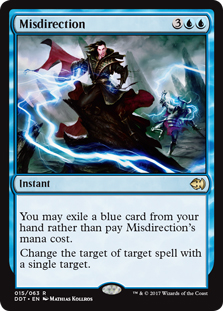
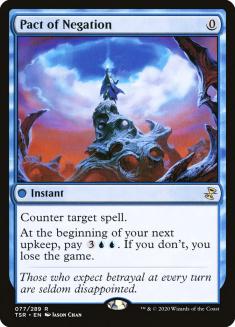

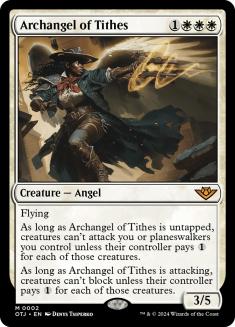
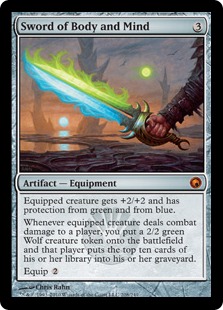
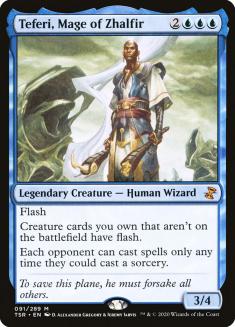
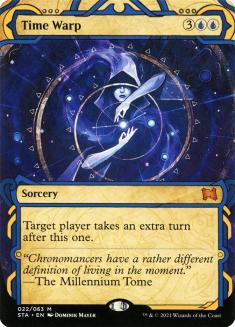

It’s hard to be a true control deck in a multiplayer format. When you manage to pull it off, it’s generally due to establishing yourself as an Archenemy,
and somehow outdrawing all your opponents. As such, I am broadly skeptical of running too many counterspells, especially when they’re not drawn from the
Dismiss/Exclude/Contradict class of spells that cantrip. If you miss the timing, your Counterspell is useless, and it promotes conservative play in a
format where playing slowly will put a target on your back. As such, I felt your deck could stick to just Cryptic Command, Desertion, and Force of Will
without losing too much power. Compared to those three, Counterspell, Misdirection, and Pact of Negation feel a bit like echoes, no? These slots will be
better spent elsewhere.
Similarly, there’s an issue when you play cards that are more annoying than they are powerful. Let’s take Teferi, Mage of Zhalfir, for example. First off,
he is kinda a lockdown card, especially when you’re relying more on his hoser ability than his flash ability. If you want flash enablers, Winding Canyons
doesn’t take up a spell slot, and it doesn’t infuriate the opponent who can now no longer use half the spells in their hand. Leyline of Anticipation is
similarly strong, though that would probably be a stronger card in a deck that was using Brago to blink Master of Waves, which this is not. Teferi draws
glares, and glares turn to daggers whenever you let your shields slip. It’s best to be avoided.
People also have a (rational) aversion to a player taking extra turns. Commander games tend to be lengthy, and particularly in games of more than four
people, someone taking two turns in a row can slow everything down. I’ve been trying to come up with a way to play turn-taking spells without pissing off
an entire playgroup, and I am stumped. I’ll keep working on it, but unless you have a very specific idea of what you’re doing, it’s probably best to skip
the Time Warp effects. Especially the ones that don’t exile upon resolution.
Archangel of Tithes is probably strong in a deck going wide, but in a deck like this one it has no synergies with Brago. If she’s in the deck to provide
unblockability, Thassa, God of the Sea will serve that role without requiring a person to work out exponential math. If she’s in the deck to frustrate
attacks on your position, Azorius has basically all the Propaganda effects, most of which are more resilient than a 3/5 flier. It’s not a bad card, it’s
just not a great fit for a deck like this, and it complicates combat planning in a way that’s only going to slog the game down.
Finally, there’s Sword of Body and Mind. Personally, I don’t think a deck should contain more Swords than your commander has hands, both because of power
considerations and because they can get spectacularly irritating in multiples. Of the three you had in your list, Sword of Body and Mind is the weakest,
since a mill and a token aren’t necessarily going to help your boardstate at all. Sword of Feast and Famine ramps, while Sword of Light and Shadow provides
some card advantage; I might want to consider Sword of Fire and Ice down the line, because that card is a game-changer, but in the meantime, Sword of Body
and Mind offers all the threat of one of the better swords without most of the advantages.
Side note: Sword of Fire and Ice; Sword of Feast and Famine; Sword of Light and Shadow; Sword of War and Peace; Sword of Body and Mind. Discuss.
Flicker Synergies
Out
(5):
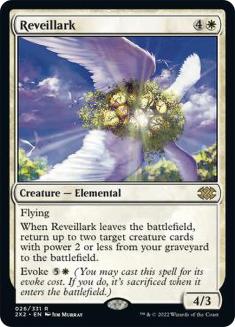
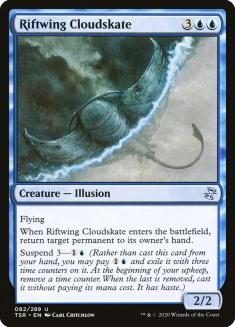
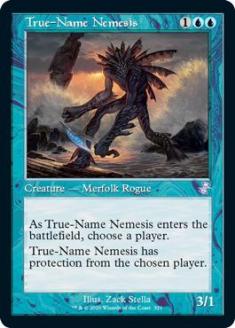
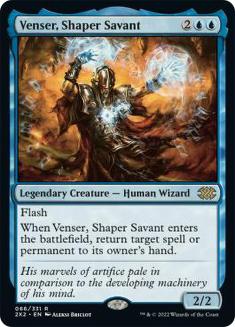
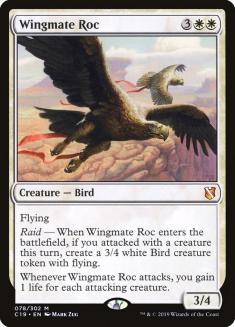

In
(3):
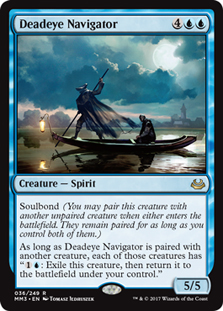
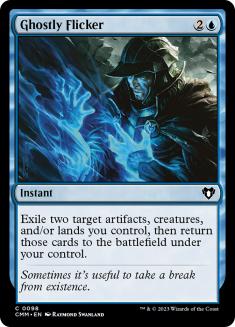
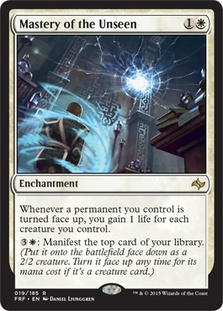

The problem with Reveillark is that it and Karmic Guide get together and form an infinite combo at the drop of a hat. In the original decklist, Bribery was
the thing that could get you the sacrifice engine to complete the loop; in this iteration, it’s the Clones. Either way, the request was no infinite loops,
and so I cut the one that was basically already there. As for my choice of things to cut, while I think Reveillark is the stronger card in the right deck,
both because it’s a two-for-one and because it plays better with Restoration Angel, Karmic Guide can rez anything in the deck, while the ‘Lark was far more
restricted.
Similarly, I wanted to respect your desire to avoid locks like Deadeye Navigator and Venser, Shaper Savant. Thing is, I think this is the type of deck that
really wants Deadeye Navigator. A deck based on flickering is going to get a lot of use out of a backup engine, and the Navigator can do some powerful
things with almost any of the other creatures you’re playing. So I cut Venser, and replaced it with the Navigator. I just think it’s a stronger card!
I mean, it’s strong enough that I’ve advocated banning it at every opportunity, but you should probably taste the power while it’s still legal. I mean,
that’s my opinion on Prophet of Kruphix, a card that lets you take literally all the turns, and one I am continually shocked that they printed. But you
should do powerful things when you have the opportunity, whether it be casting Treasure Cruise in Legacy or playing Deadeye Navigator in Commander.
Riftwing Cloudskate is a decent Man-o’-War, but its strength is in its cheap suspend price, and, as I have mentioned at relative length, suspend has become
less reliable now. Wingmate Roc makes a nice token, and gains you life when it swings, but flickering it to get a token seemed like a relatively weak
return for the mana. Maybe if the deck was looking to go super wide, that lifegain might be relevant, but in the meantime I think it’s a slot that would be
better spent elsewhere. Finally, there’s True-Name Nemesis. Ironically, given its origin, the card is by far at its weakest in Commander. Mass –X/-X
removal is quite frequent, and even if it can slice through an opponent’s defenses it’s only doing three damage a turn. When that represents a six turn,
unstoppable clock (assuming fetchlands), that’s plenty fast. When it’s at least fourteen turns and vulnerable, it’s just another beater, and not an amazing
one at that.
Instead, I wanted to bring in Ghostly Flicker, for the flickermancer relationship with Ulamog’s Reclaimer. It’s strong elsewhere, since it gives you an
instant speed way to trigger your enters-the-battlefield effects, but it really shines letting you process at an instant speed. It’s also very good with
the final card in this section: Mastery of the Unseen. The obvious interaction here is that you can Manifest a bunch of cards and then use Brago or Ghostly
Flicker to cheat any of your manifests that happen to be permanents into play, whether or not they’re creatures. Add in the fact it’s a mana sink, and that
it lets you gain life when needed (at a very similar rate to the Wingmate Roc, only without requiring an attack), and it seems like it’s going to fit in
well with the rest of what you’re doing.
Planeswalkers
Out
(5):
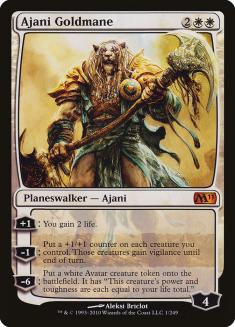
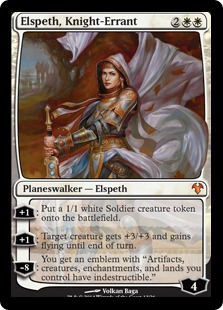
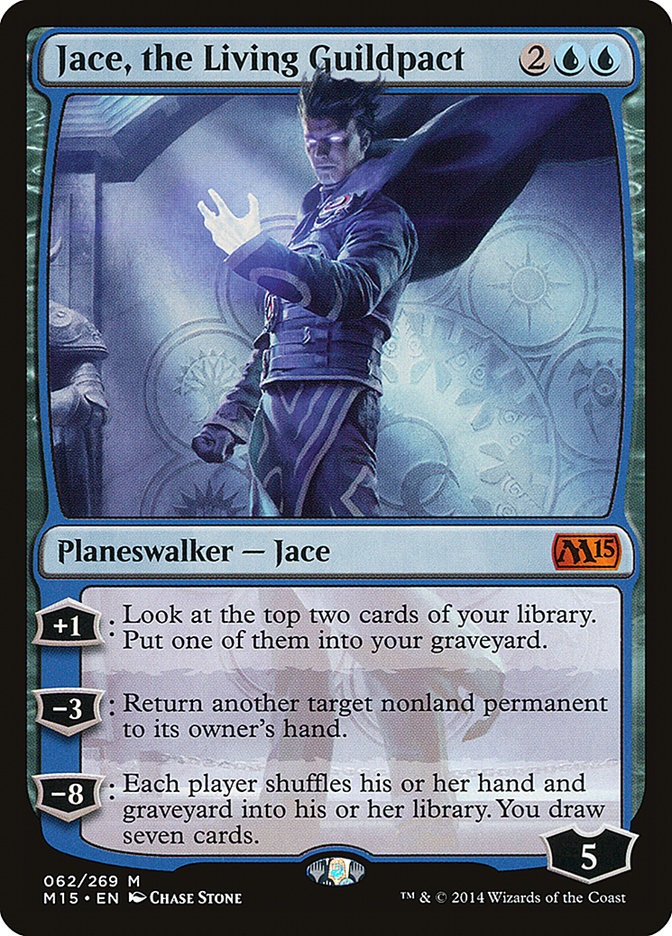

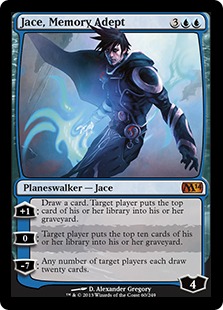

In
(5):
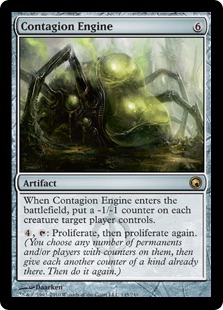
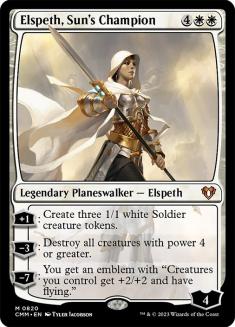
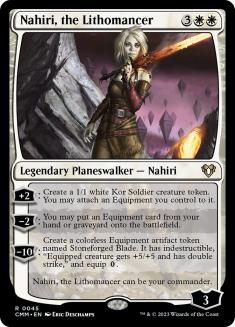
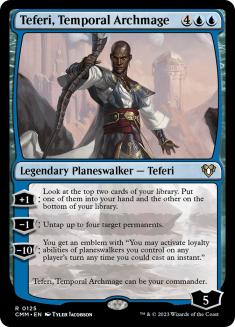


Ajani Goldmane occupies a weird position in Commander. He’s one of the better anthem-effects you can run (and one of the many banes facing Harbinger of the
Tides), but his plus is practically useless. If you can ultimate him, you get a Serra Avatar token, but it’s difficult to do that outside a Doubling Season
deck. Even if you can pull it off, you’re left with beef that has no evasion or trample, and yet is terrifying (despite how unlikely it is that it will
ever hit). In a tokens deck he’s a strong contender, but in a deck like this he just doesn’t quite make the grade.
Elspeth, Knight-Errant is outclassed in Commander by each of her other incarnations. If someone kills Elspeth 1.0 the turn you play her out, you’ve spent
four mana for a pump spell or a 1/1 token. Should she survive, she offers an ultimate which gives your opponents every reason to kill you before you
develop your board presence any further, since Avacyn, Angel of Hope is irritating enough when she’s not an emblem. You will be the big threat when you get
close to popping her, and you just don’t get a ton in return.
Instead, look at Elspeth, Sun’s Champion. Sure, she’s a little pricier, but she was dominant in Standard control decks for a reason. Elspeth 3.0 wins
games. Elspeth 1.0 can give Brago +3/+3 (since he already has flying); Elspeth 3.0 can destroy anything with enough power to kill Brago and then, when you
reset her, spit out three tokens in one shot. Planeswalkers have only gotten better with time, and Elspeth 1.0 just isn’t enough card advantage anymore to
keep up.
Speaking of planeswalker drift, let’s look at the Jaces. First off, Jace, Vryn’s Prodigy is amazing but not for this deck. Flickering his back half leaves
you with a looter with summoning sickness, which is almost never going to be what you want from that play. Also, he is at his best in a spell-heavy deck,
whereas Brago works better with permanents. It’s crazy that we have another Jace, the Mind Sculptor in terms of price and power level, but they were
probably overcompensating after Jace, the Living Guildpact got its numbers so wrong.
Plus, that griefer ultimate is so counter-synergistic with your typical Jace. Not only does it undo all your milling, but it doesn’t effect the board or
win the game while pissing off all your opponents? Not what I’m looking for in a Commander Jace.
Jace, Memory Adept hits closer do the mark, since it offers card advantage and a way to win the game, but it has no Brago synergy. Okay, so technically you
can get two cards off it per turn, which is not nothing, but him being in play means you can’t get Jace Beleren, Jace, Architect of Thought, or Jace, the
Mind Sculptor into play. There is such a thing as too many Jaces, and Memory Adept is just a bit worse than the other three.
So, other than Elspeth, Sun’s Champion, who did I bring in? First, I wanted to diversify your planeswaker roster a little, so you could have more
planeswalkers out at the same time. For this purpose, Teferi, Temporal Archmage and Nahiri, the Lithomancer seemed to make a great deal of sense. Nahiri
works with your equipment theme, specifically resurrecting it when it gets blown up… as it will. She can also make two tokens a turn, with the help of
Brago, or can even resurrect a piece of equipment and then make a body for it after the flicker. She’s not the best planeswalker outside of a devoted
equipment deck (though she’s wonderful in a Doubling Season theme), but she provides the three major aspects a planeswalker should: card advantage,
protection, and a way to win the game.
Teferi, Temporal Archmage’s protection is a bit odder, since for him it means giving your team pseudo-vigilance. That’s not the best way to use his
decremental ability, though; it really shines in setting up recursive, but not infinite, loops with our next two players: The Chain Veil and Contagion
Engine. The Chain Veil lets you get two planeswalker activations on a normal turn, but add Brago into the mix and you can get three. It’s a rare
planeswalker that won’t do something insanely powerful when it’s being used that many times, and the number only goes up when you get Teferi in the mix.
Contagion Engine helps by maintaining Teferi’s loyalty while all this is going on, but adding two loyalty counters to your planeswalkers each turn, while
simultaneously blowing up your enemies and granting boons to your allies… well, it’ll make you feel good. It also has the very relevant
enters-the-battlefield ability of putting a -1/-1 counter on each creature one of your opponents control, and that synergizes well with Brago even if you
don’t have a planeswalker on the board. Alone, it’s a slow-motion Wrath of God; in a team, it can be so much more.
Incidentally, it’s also something that kills True-Name Nemesis. You could never cast it in Legacy, but it’s exactly the type of card to expect to see in a
Commander deck.
The Processors
In
(4):
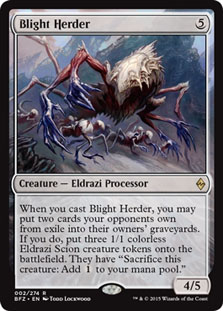
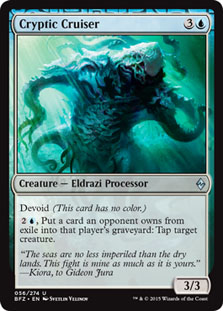
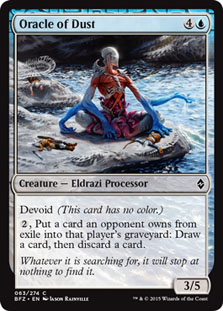
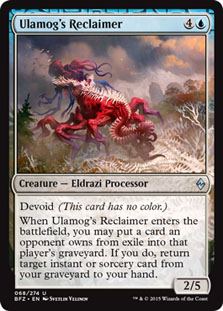

If I have any complaint about the Processors, it’s one that’s likely to be corrected in the next set: there just aren’t enough good ones yet. I’m
particularly fond of Void Attendant, and yet while it might have no color, it does have a color identity. The repeatable ones are definitely the stronger
ones; even something as minor as Cryptic Cruiser’s ability to tap things is more useful for the process than the effect.
But I tried to add the decent ones in this sliver of the color pie, which basically meant three of the four acceptable blue ones and the only colorless
Processor worth a damn. Ulamog’s Reclaimer can do the flickermancer thing while also getting you your spells back (which is good, since all the ones that
are left are pretty powerful). Oracle of Dust lets you loot, at instant speed, and as much as you have the mana and the fodder for. Blight Herder is
limited by the enters-the-battlefield trigger, but Brago should offer more of those than you otherwise might get, and its ability to repeatedly spawn out
tokens seems mighty solid. And Cryptic Cruiser I mentioned in the previous paragraph; not the strongest, but the instant-speed does some work.
One note of a card whose valuation I think goes up due to these Processors: Deep Analysis. If people are fighting for exiled cards as a resource, having a
relatively inoffensive spell with Flashback means that you’ve got a decent shot of getting it dumped back in the graveyard, particularly if you’re playing
the political subgame. It’s food for thought; what other cards with Flashback are more dangerous than they might appear to be?
The Fuel
In
(9):
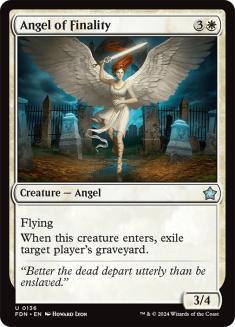
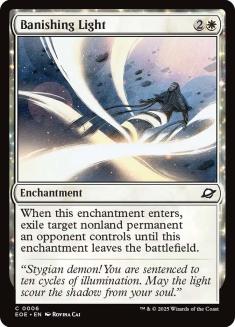
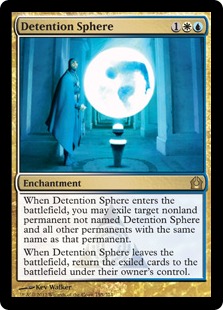
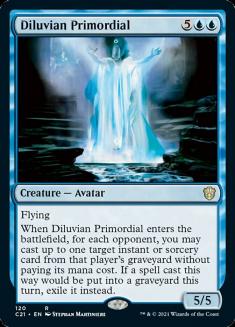

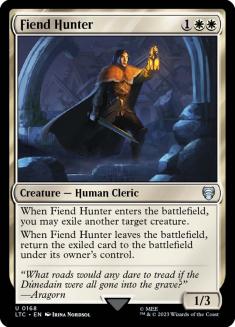
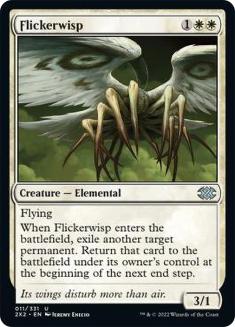
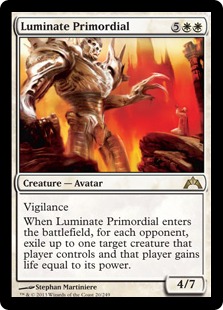
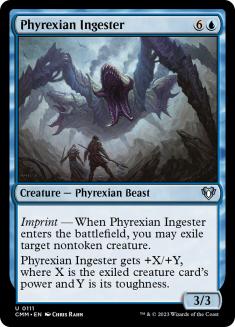
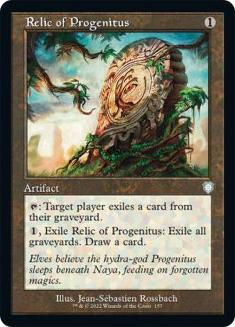

And this is how we fuel the great process. Each one of these cards removes another thing, banishing it into the space between worlds like it were some
Cyberman/Dalek conflict waiting to explode. Most of these permanents flicker well, particularly after you’ve processed their linked object. Angel of
Finality and Relic of Progenitus offer a ton of fuel at once, while also having the ancillary ability to perma-exile some of the cards you processed off an
O-Ring or equivalent, but also aren’t thrilled to see in a graveyard. Diluvian Primordial does a similar trip, letting you process the best spells back
into each players’ graveyard and then get the benefit of casting them again, something you can do time and time again with the right sequencing.
Of course, creatures are a major problem, particularly if you’re trying to make it through an opponent’s aerial defenses to proc another sweet Brago
trigger. Detention Sphere is good at wiping out tokens, which makes it a great flicker whether or not you’ve managed to get a processor online; Flickerwisp
offers a shorter window, but it can double as a slow way to flicker your own creatures. Phyrexian Ingester shrinks a bit when you process its linked card,
but who cares? If the linked object goes unprocessed, it still stays dead.
Fiend Hunter allows you to do the O-Ring trick, which is pretty gross when paired with an enabler like Deadeye Navigator. It’s also occasionally useful to
exile one of your own creatures when you’re expecting a Wrath, so that when your team goes down you’ve got an immediate board presence to help you rebuild.
Or, if that’s too fancy, you can Fiend Hunter something like Phyrexian Ingester, so that if an opponent swings into you hard enough to kill a 1/3 (which is
not very hard), you can chump and then have your Ingester spill out of the dead husk to eat something new.
Side note: I, for one, hope the rumored “Emrakul versus New Phyrexia” storyline becomes a real thing. Emmy versus Ellie would be a fight for the ages.
The bigger picture, though, is that each of these cards is versatile, powerful, and generally more than a one-for-one, even before you get Brago, King
Eternal into the picture. That’s ideal, and it’s what you requested. The individual pieces might not seem as powerful as the cards that are tearing up in
other formats, but together, they make the machinery of death.
And that’s my cue to stop tinkering.
Creatures (26)
- 1 Solemn Simulacrum
- 1 Karmic Guide
- 1 Mulldrifter
- 1 Vendilion Clique
- 1 Flickerwisp
- 1 Stoneforge Mystic
- 1 Sea Gate Oracle
- 1 Augury Owl
- 1 Phyrexian Metamorph
- 1 Phyrexian Ingester
- 1 Fiend Hunter
- 1 Snapcaster Mage
- 1 Restoration Angel
- 1 Deadeye Navigator
- 1 Diluvian Primordial
- 1 Luminate Primordial
- 1 Thassa, God of the Sea
- 1 Omenspeaker
- 1 Angel of Finality
- 1 Brago, King Eternal
- 1 Clever Impersonator
- 1 Whirler Rogue
- 1 Blight Herder
- 1 Cryptic Cruiser
- 1 Ulamog's Reclaimer
- 1 Oracle of Dust
Planeswalkers (9)
- 1 Jace Beleren
- 1 Tezzeret the Seeker
- 1 Jace, the Mind Sculptor
- 1 Gideon Jura
- 1 Venser, the Sojourner
- 1 Jace, Architect of Thought
- 1 Elspeth, Sun's Champion
- 1 Teferi, Temporal Archmage
- 1 Nahiri, the Lithomancer
Lands (38)
- 6 Plains
- 1 Wasteland
- 1 Adarkar Wastes
- 7 Island
- 1 Ancient Tomb
- 1 Minamo, School at Water's Edge
- 1 Skycloud Expanse
- 1 Windswept Heath
- 1 Polluted Delta
- 1 Flooded Strand
- 1 Azorius Chancery
- 1 Ghost Quarter
- 1 Hallowed Fountain
- 1 Calciform Pools
- 1 Flagstones of Trokair
- 1 Nimbus Maze
- 1 Tolaria West
- 1 Mystic Gate
- 1 Glacial Fortress
- 1 Celestial Colonnade
- 1 Tectonic Edge
- 1 Command Tower
- 1 Homeward Path
- 1 Cavern of Souls
- 1 Rogue's Passage
- 1 Prairie Stream
- 1 Blighted Cataract
Spells (27)
- 1 Sensei's Divining Top
- 1 Umezawa's Jitte
- 1 Force of Will
- 1 Mana Vault
- 1 Sol Ring
- 1 Desertion
- 1 Sword of Light and Shadow
- 1 Gilded Lotus
- 1 Deep Analysis
- 1 Austere Command
- 1 Cryptic Command
- 1 Oblivion Ring
- 1 Relic of Progenitus
- 1 Contagion Engine
- 1 Sword of Feast and Famine
- 1 Spine of Ish Sah
- 1 Batterskull
- 1 Ghostly Flicker
- 1 Detention Sphere
- 1 Sphinx's Revelation
- 1 Banishing Light
- 1 The Chain Veil
- 1 Treasure Cruise
- 1 Dig Through Time
- 1 Monastery Siege
- 1 Mastery of the Unseen
- 1 Tragic Arrogance

With 25 creatures and a bunch of other interesting fodder to flicker, I’m fairly happy with how this deck worked out. Hopefully it will help you navigate
your more cutthroat playgroup, though you may require some further tweaks down the line if you find individual pieces aren’t holding up.
The Price
As per the usual, I kept to budget. Under it, in this case. Observe!
|
Card |
Price |
|
0.15 |
|
|
0.15 |
|
|
0.15 |
|
|
0.15 |
|
|
0.15 |
|
|
0.25 |
|
|
0.25 |
|
|
0.25 |
|
|
0.49 |
|
|
0.49 |
|
|
0.49 |
|
|
0.49 |
|
|
0.49 |
|
|
0.49 |
|
|
0.55 |
|
|
0.59 |
|
|
0.69 |
|
|
0.79 |
|
|
0.79 |
|
|
0.89 |
|
|
1.05 |
|
|
1.15 |
|
|
1.35 |
|
|
1.49 |
|
|
2.49 |
|
|
2.89 |
|
|
2.95 |
|
|
3.69 |
|
|
3.89 |
|
|
4.95 |
|
|
5.99 |
|
|
6.59 |
|
|
6.99 |
|
|
7.39 |
|
|
Total |
61.6 |
As you can see, there are a grand total of four cards I added that were over $5. That having been said, I did come up with some other cards you might
consider down the line, cards that were either too expensive or that I couldn’t fit into the deck. These cards include:
Elspeth Tirel — Token generation, lifegain
Sun Titan — Recursion, flicker synergies
Oblivion Sower – Ramp, pseudo-processing
Glen Elendra Archmage — Counterspell, flicker synergies
Master of Waves — Flicker synergies, finisher
Duplicant — Removal, exile fodder
Eiganjo Castle — Brago protection
Quarantine Field — Great exile fodder, bad with flicker
There are certainly others; if there’s a card that makes an impact on the board when it enters the battlefield, it’s definitely worth considering. The key
is synergy, and I think the deck is a little more cohesive now after these changes.
That’s it for this week! Tune in next week, when Levi submits another strong showing. And don’t forget, Commander 2015 comes out November 13th. They’ve
spoiled two cards and already I’m happy: Eternal Witness could use a reprint, and the Boros commander looks pretty
interesting. The Commander precons have yet to disappoint, and I strongly doubt this will be the year they start doing so!
Want to submit a deck for consideration to Dear Azami? We’re always accepting deck submissions to consider for use in a future article. Only one deck
submission will be chosen per article, but being selected for the next edition of Dear Azami includes not just deck advice but also a $20 coupon to
StarCityGames.com
!
Email us a deck submission using
this link here!
Like what you’ve seen? Feel free to explore more of Dear Azami
here, in the Article Archives
! And feel free to check Jess’s own
Command of Etiquette
column on
Hipsters of the Coast
, for more Commander and casual content. Now on Thursdays!
